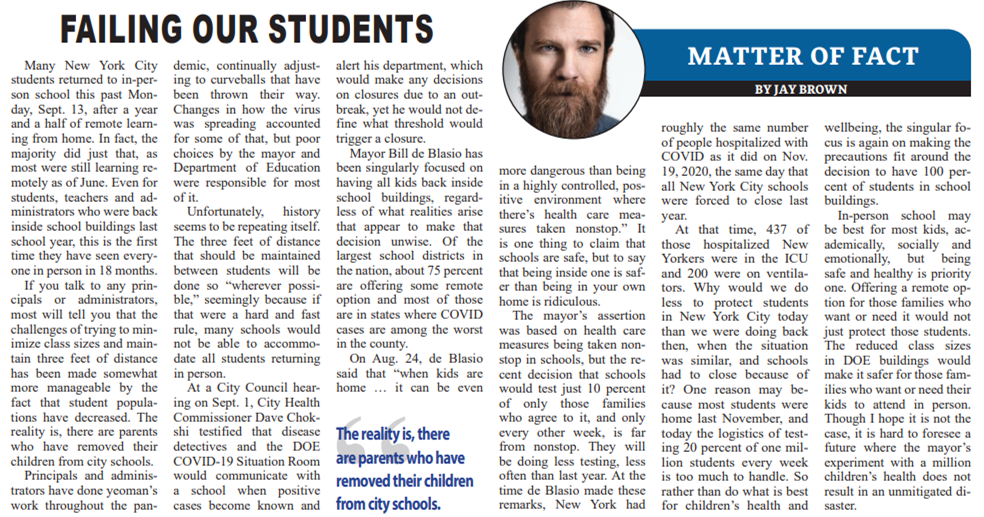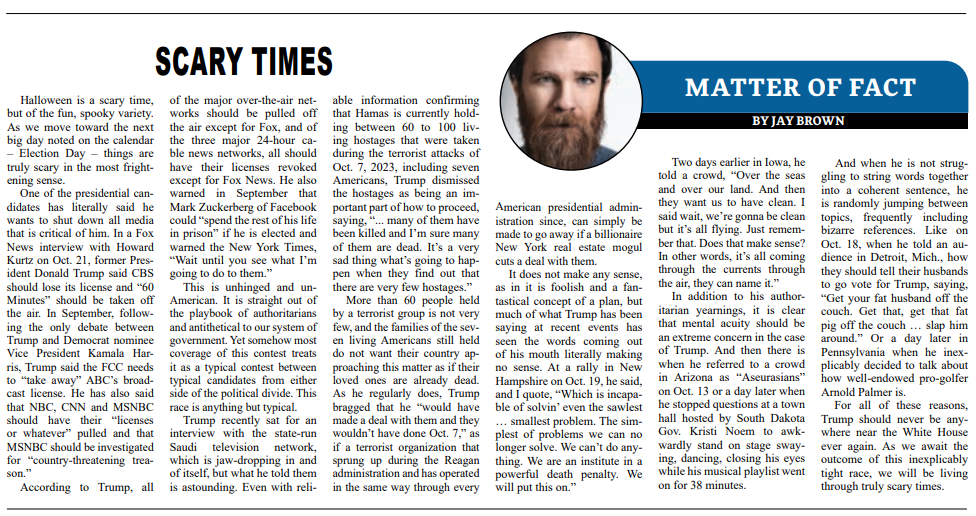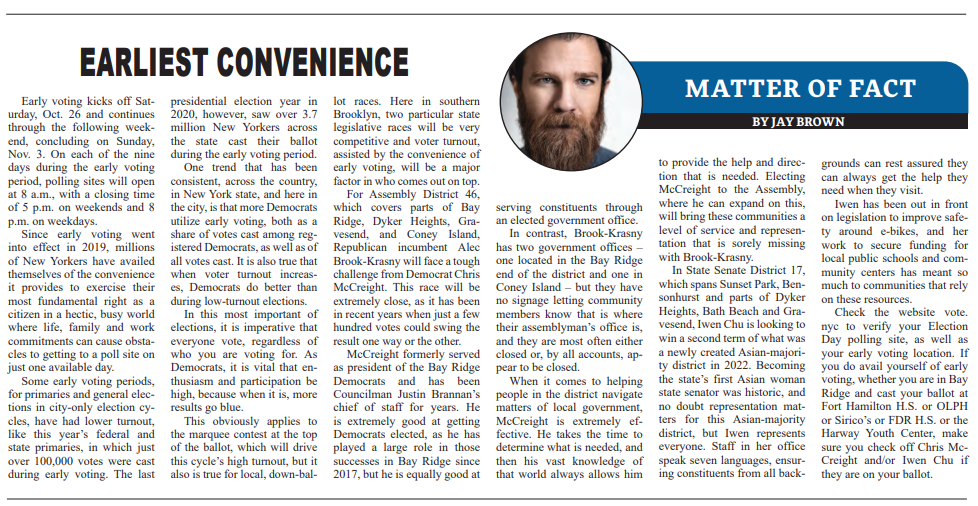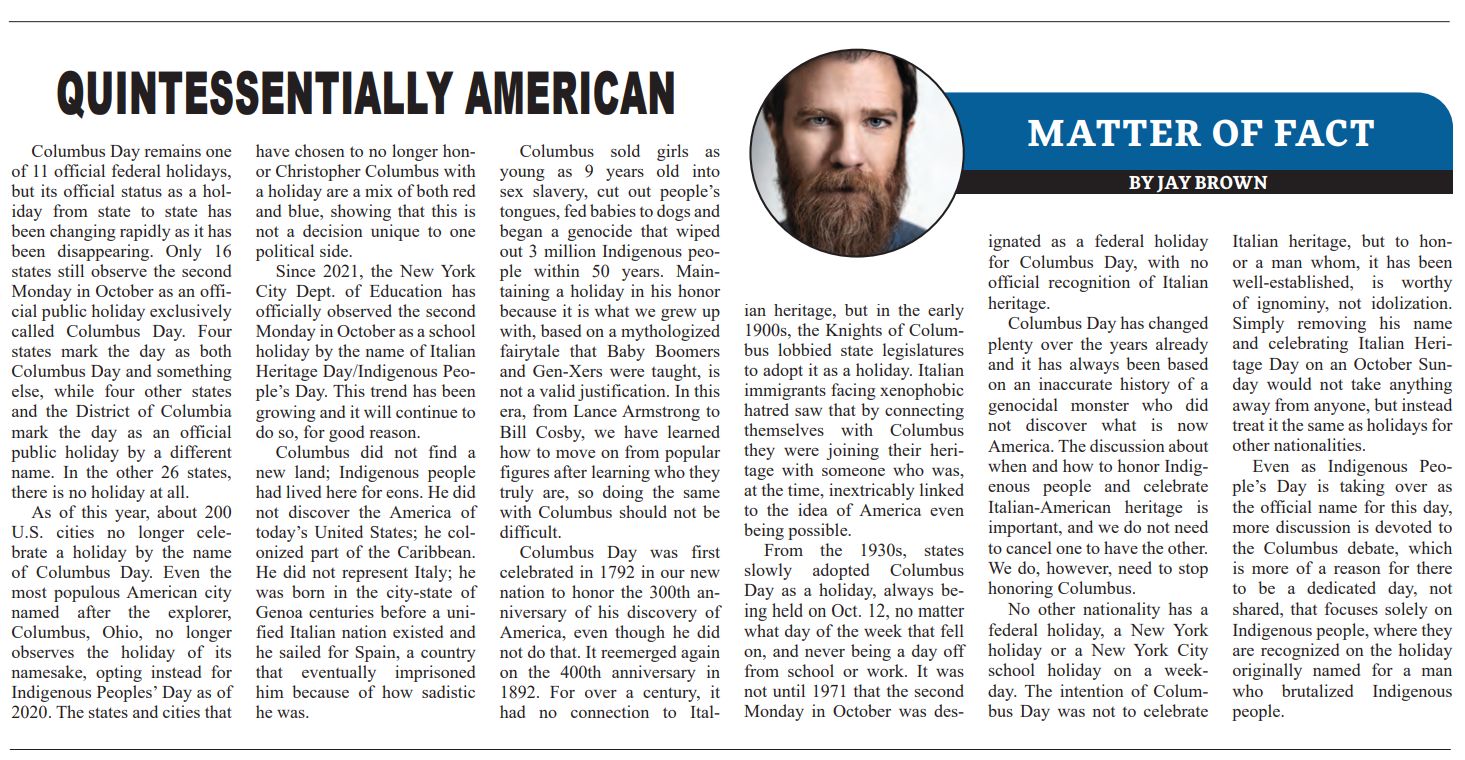This column, from the weekly opinion piece MATTER OF FACT, first appeared on BrooklynReporter.com, the Home Reporter and Spectator dated September 17, 2021
Many New York City students returned to in-person school this past Monday, September 13, after a year-and-a-half of remote learning from home. In fact, the majority did just that, as most were still learning remotely as of June. Even for students, teachers, and administrators that were back inside school buildings last school year, this is the first time they have seen everyone in-person in 18 months.
If you talk to any principals or administrators, most will tell you that the challenges of trying to minimize class sizes and maintain three feet of distance has been made somewhat more manageable by the fact that student populations have decreased. The reality is, there are parents who have removed their children from city schools.
“So rather than do what is best for children’s health and wellbeing, the singular focus is again on making the precautions fit around the decision to have 100 percent of students in school buildings.”
Principals and administrators have done yeoman’s work throughout the pandemic, continually adjusting to curveballs that have been thrown their way. Changes in how the virus was spreading accounted for some of that, but poor choices by the Mayor and Department of Education were responsible for most of it.
Unfortunately, history seems to be repeating itself. The three feet of distance that should be maintained between students will be done so “wherever possible,” seemingly because if that were a hard and fast rule, many schools would not be able to accommodate all students returning in-person. At a City Council hearing on September 1, City Health Commissioner Dave Chokshi testified that disease detectives and the DOE COVID-19 Situation Room would communicate with a school when positive cases become known and alert his department, which would make any decisions on closures due to an outbreak, yet he would not define what threshold would trigger a closure.
Mayor de Blasio has been singularly focused on having all kids back inside school buildings, regardless of what realities arise that appear to make that decision unwise. Of the largest school districts in the nation, about 80 percent are offering some remote option and most of those without a remote option are in states where COVID cases are among the worst in the county.
On August 24, de Blasio said that “when kids are home… it can be even more dangerous than being in a highly controlled, positive environment where there’s health care measures taken nonstop.” It is one thing to claim that schools are safe, but to say that being inside one is safer than being in your own home is ridiculous.
The mayor’s assertion was based on health care measure being taken nonstop in schools, but the recent decision that schools would test just 10% of only those families who agree to it, and only every other week, is far from nonstop. They will be doing less testing, less often than last year. At the time de Blasio made these remarks, New York had roughly the same number of people hospitalized with COVID as it did on November 19, 2020, the same day that all New York City schools were forced to close last year.
At that time, 437 of those hospitalized New Yorkers were in the ICU and 200 were on ventilators. Why would we do less to protect students in New York City today than we were doing back then, when the situation was similar, and schools had to close because of it? One reason may because most students were home last November and today, the logistics of testing 20 percent of one million students every week is too much to handle. So rather than do what is best for children’s health and wellbeing, the singular focus is again on making the precautions fit around the decision to have 100 percent of students in school buildings.
In-person school may be best for most kids, academically, socially, and emotionally, but being safe and healthy is priority one. Offering a remote option for those families who want or need it would not just protect those students. The reduced class sizes in DOE buildings would make it safer for those families who want or need their kids to attend in-person. Though I hope it is not the case, it is hard to foresee a future where the mayor’s experiment with a million children’s health does not result in an unmitigated disaster.




